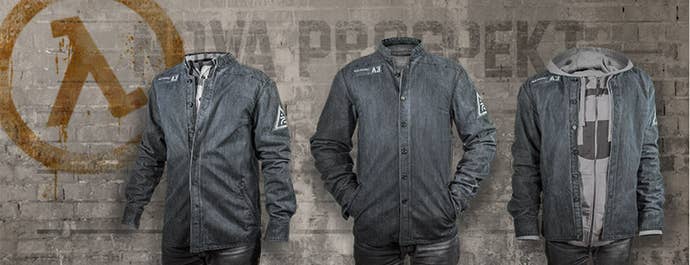Inside Musterbrand: How One Company Crafts High-End Clothing for Gamers
The past, present, and future of one company's attempts to carve a niche by making stylish premium clothing based on video games.
This article first appeared on USgamer, a partner publication of VG247. Some content, such as this article, has been migrated to VG247 for posterity after USgamer's closure - but it has not been edited or further vetted by the VG247 team.
If you look in the closets and dressers of gamers, you'll probably find a bunch of t-shirts and hoodies, each one sporting printed logos and characters from their favorite games. Some may have the art simply slapped on the front or the back, while others try to show a bit of craft, making the design a bit cooler or more subtle. These clothes are collected from various conventions, collector's editions, or online stores like ThinkGeek, Fangamer, Jinx, or Redbubble. Expressing your love for your favorite game is first and foremost, style is an afterthought. That is the norm for video game themed clothing.

Why does it have to be that way?
That's the driving question behind Musterbrand, a Germany-based producer of premium game-themed clothing. The market for basic t-shirts and hoodies for gamers is filled to the brim, but there's room out there for something more expensive and stylish. Musterbrand straddles the line quality clothing and game-themed item: a jacket from the company is at the same time hidden in plain sight and a robust expression of the games that inspired it. If you know Assassin's Creed Syndicate, then the Jacob Coat from Musterbrand will jump out at you immediately. If you don't, it's simply a nice coat.
What Drives Musterbrand?
Musterbrand was established in 2010 by Knut Jochen Bergel in partnership with Hermes Otto International New York, one part of the conglomerate behind Crate & Barrel and the Bombay Company. Musterbrand designs and produces collections of clothing based on the biggest games in our industry: Assassin's Creed, Metal Gear Solid, Halo, Deus Ex, World of Warcraft, and more. While Musterbrand began in New York, the company has since moved its headquarters to Hamburg, Germany. It's from there that Bergel sits down for an interview with me, via Skype.
"We started Musterbrand in October 2010 in New York," Bergel tells me in the call. "There was evidence that the gaming market was growing significantly, but the licensing and merch market never really managed to cope with the growth of the industry. I coincidentally met some guys who worked for a company which was also based in Hamburg, Germany. A huge textile concern. We brought the video game expertise, knowing how the market works, together with this fashion experience and that's how we started Musterbrand."
For some, the idea of a premium clothing line based on video games seems a bit odd. If the market is served by t-shirts, hoodies, and sweatshirts, where's the need for something more expensive? For Bergel, it all goes back to the idea of why people wear certain fashions in the first place.
"I think it's very natural," begins Bergel. "If you look at any clothing we're wearing, it's all been inspired by entertainment or some sub-culture. It's about basking in some projected glory. When you like something and become a fan, you want to show yourself being a part of this sub-culture."

"The t-shirt used to be an underwear-type of thing," he explains. "Then in the 50's it was used as a shirt. Blue jeans, leather jackets, boots. Think about hip-hop, think about the 70's. Everything goes back to entertainment; some music, art, or film that inspired the audience. They were wearing what the heroes and protagonists were wearing on stage. Why should video games not have that impact?"
Bergel points out the demographics of our industry. According to Intel, there are 1.8 billion gamers worldwide and the ESA reports that the average game player is 35 years old. Gamers have grown up, they have jobs and family lives. That's a lot of income floating around, especially at an age when tastes and needs begin to shift. It's a need Bergel saw in himself, having worked in the gaming industry for 14 years prior to starting Musterbrand.
"You could tell that when some studios released exclusives or limited editions, the buzz in the community about something premium was always much, much higher than cheap merchandise," says Bergel. "If you look into the demographics, there's a huge chunk of very dedicated gamers who are 23 and upwards, who won't buy figurines or cheap merch. Nevertheless, they're engaged with the franchises. Based on that ideology, that's where we started building Musterbrand."
That said, Musterbrand isn't quite a traditional fashion company. They make clothes, but they do so in tandem with game development. Their contact with a studio is consistent throughout the process of developing a collection.
"We try to incorporate details that we think are necessary to provide a very authentic franchise feeling," Bergel explains. "You don't always have that in the traditional fashion industry. The way those guys work is completely different from what we have to do, considering that we have to approve almost every step with the studio. It's about balancing designing and releasing video games along with the manufacturing of physical garments."


